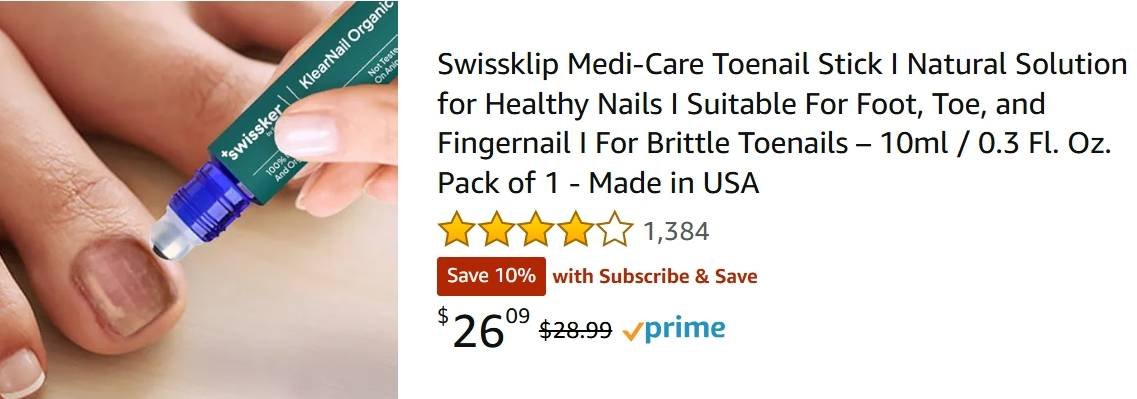Do Home Remedies for Ingrown Toenails Really Work?
Find a Podiatrist Near You
Get same-day appointments with verified podiatrists. Insurance accepted.
Ingrown toenails are painful, frustrating, and can lead to infections if left untreated. Many people turn to home remedies before seeking professional care. But do these natural treatments actually work? Understanding the effectiveness of home remedies can help you determine the best course of action.

What Causes Ingrown Toenails?
In this youtube video below, Dr. Eric Berg breaks down the common culprits—from tight footwear and poor trimming habits to genetic nail shapes that naturally curve into the skin. He also explains how inflammation plays a role, making even minor pressure feel like a major problem. It’s a straightforward guide that helps you identify your personal risk factors so you can take steps to prevent future pain.
An ingrown toenail occurs when the edge of the nail grows into the surrounding skin. Common causes include:
- Improper Nail Trimming – Cutting nails too short or rounding the edges increases the risk.
- Tight Shoes – Footwear that squeezes the toes can force the nail into the skin.
- Injury – Stubbing your toe or repetitive pressure from activities like running can lead to an ingrown nail.
- Genetics – Some people naturally have curved toenails that are more prone to becoming ingrown.
Popular Home Remedies for Ingrown Toenails
Many home remedies claim to relieve ingrown toenail pain and promote healing. Here’s a look at the most common ones and their effectiveness.
1. Warm Water Soaks
Soaking your feet in warm water for 15-20 minutes several times a day softens the skin and reduces swelling. Adding Epsom salt may further soothe inflammation. While this remedy can ease discomfort, it does not fix the underlying problem if the nail is deeply embedded.
2. Cotton or Dental Floss Under the Nail
Some people place a small piece of cotton or dental floss under the ingrown edge to lift the nail away from the skin. This method can help, but it must be done carefully to avoid pushing the cotton too deep and worsening the irritation.
3. Apple Cider Vinegar Soaks
Apple cider vinegar has antibacterial properties that may help prevent infection. Mixing it with warm water for a foot soak can reduce pain and inflammation. However, it does not directly correct the ingrown nail itself.
4. Hydrogen Peroxide
Soaking the affected toe in a diluted hydrogen peroxide solution can help keep the area clean and prevent infection. While it’s useful as a disinfectant, it does not address the root cause of the ingrown toenail.
5. Antibacterial Ointments
Applying an over-the-counter antibacterial ointment can help reduce the risk of infection. While this won’t remove the ingrown nail, it does create a protective barrier against bacteria.
6. Tea Tree Oil
Tea tree oil has antifungal and antibacterial properties. Applying a few drops diluted in a carrier oil may reduce redness and swelling. While it can aid healing, it does not physically correct the nail’s growth pattern.
7. Lifting the Nail with a Bandage
Some people use a small bandage to gently pull the skin away from the nail. This method may provide relief, but it requires patience and proper placement to be effective.
If you’ve ever had an ingrown toenail, you know it can turn a simple walk into a wincing shuffle. In this video below, Dr. Kim—America’s Holistic Foot Doctor—shares six practical home remedies that can help ease pain and reduce swelling before it gets worse. From soothing soaks to proper nail trimming techniques, each tip focuses on giving your toe the space it needs to heal naturally.
Do Home Remedies Really Work?
Home remedies can help with minor ingrown toenails by reducing pain, swelling, and infection risk. However, they do not always solve the issue entirely. If the nail is deeply embedded, home treatments may only provide temporary relief.
When to See a Doctor
If home remedies don’t work or symptoms worsen, professional treatment is necessary. Seek medical help if you experience:
- Severe pain and swelling
- Signs of infection (redness, pus, warmth)
- A recurring ingrown toenail
- A condition like diabetes that increases infection risk
Doctors may recommend professional treatments such as partial nail removal, antibiotics, or laser therapy for chronic cases.
Final Thoughts
Home remedies can help manage minor ingrown toenails, but they are not always a permanent fix. If the problem persists or worsens, seeking professional care is the best option. Preventive measures like proper nail trimming, wearing comfortable shoes, and keeping feet clean can help you avoid ingrown toenails in the future.
Ready to See a Podiatrist?
Connect with top-rated podiatrists in your area. Book appointments instantly with verified doctors who accept your insurance.
Same-Day Appointments
Get seen today with urgent care availability
Verified Reviews
Real patient reviews and ratings
Insurance Accepted
Most major insurance plans covered
